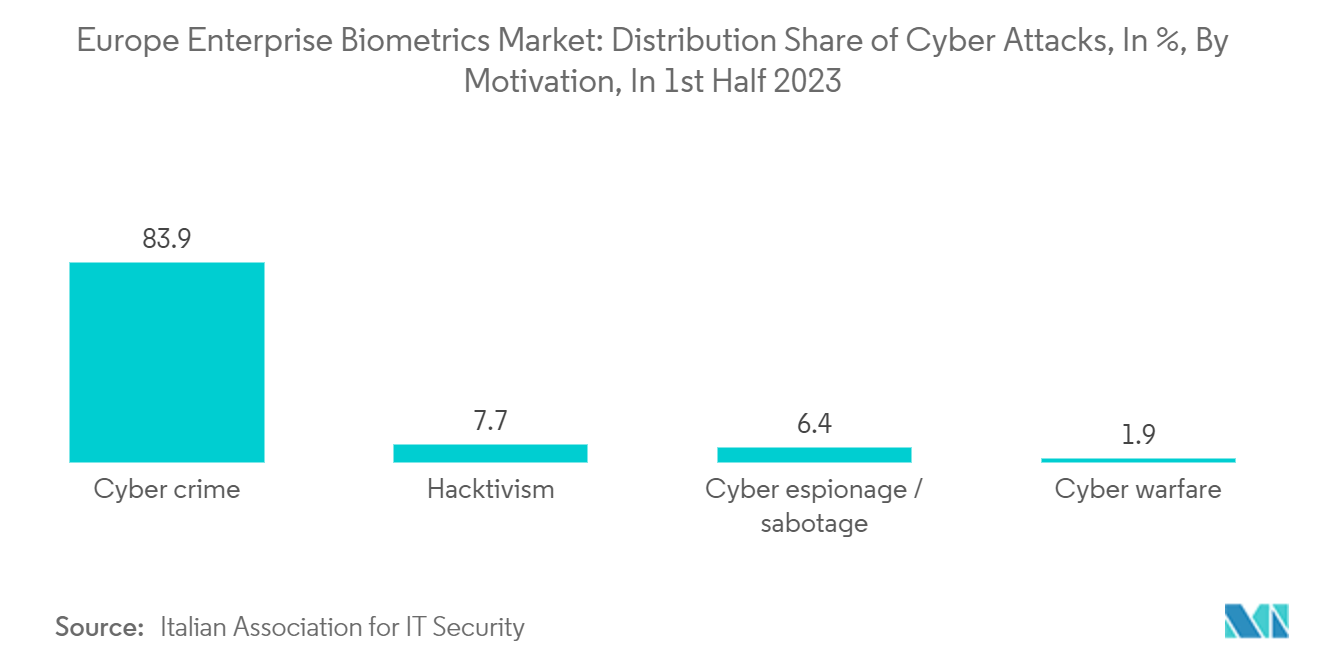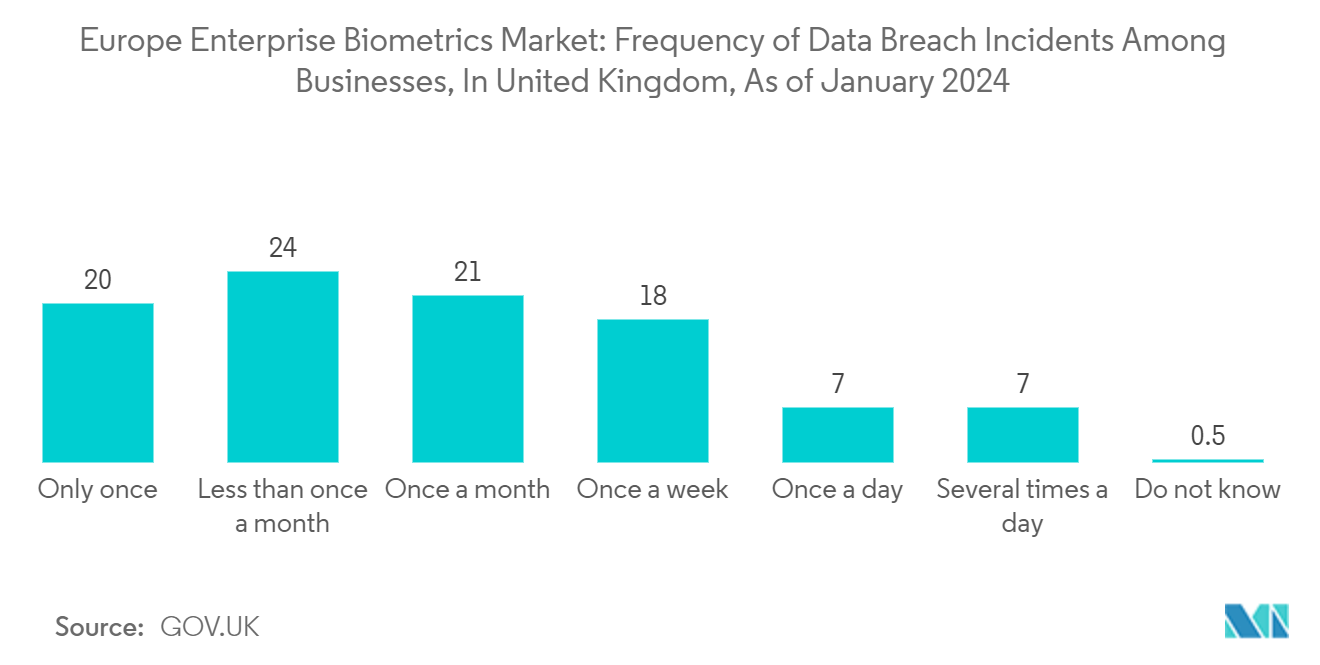Market Trends of Europe Enterprise Biometrics Industry
The Rising Demand for Safety and Security Measures in Organizations is Anticipated to Support Market Growth
- Safety and security have become paramount concerns for European enterprises in recent years. With the increasing number of cyber threats, data breaches, and identity theft cases, businesses seek robust solutions to protect their assets, employees, and customers.
- Traditional authentication methods, like passwords and PINs, are no longer considered secure enough to protect sensitive information. Weak or stolen passwords have been responsible for a significant number of data breaches. As a result, enterprises are turning to biometric technology for enhanced authentication and access control.
- According to the Italian Association for IT Security, during the initial half of 2023, approximately 84% of cyberattacks in Italy were driven by cybercrime. Further, cyber espionage accounted for about 6.4% of the incidents.
- Further, according to IBM Corporation, the average cost of a data breach from March 2022 to March 2023 accounted for USD 4.67 million in Germany, while the global average stood at USD 4.45 million. The increasing number of data breaches, coupled with high-cost implications in Europe, is anticipated to drive the growth of the market studied.
- Market players in Europe are striving to offer comprehensive products to cater to the requirements of their consumers. For instance, BioID offers securely designed face and eye recognition in Germany, including anti-spoofing liveness detection for universal access control. BioID Software-as-a-Service can be integrated directly into users' mobile apps or websites using its powerful and intuitive facial recognition through the user's webcam or smartphone camera. Businesses can use biometrics in addition to traditional access controls to significantly improve security and convenience.
- Additionally, the development of sophisticated algorithms and machine learning techniques has made it possible to achieve higher accuracy rates and reduce false acceptance and rejection rates. The integration of biometric systems with other technologies, such as artificial intelligence (AI) and cloud computing, has enhanced their capabilities, making them more scalable and cost-effective for enterprises.

The United Kingdom is Anticipated to Register Robust Market Growth Rate
- Biometric authentication surpasses traditional methods in user experience, offering a seamless and convenient approach. Users are relieved from the burden of complex passwords or physical tokens for authentication. Solutions like fingerprint, facial, and voice recognition streamline the process, elevating user satisfaction and productivity. This convenience factor propels the adoption of biometric solutions across enterprise applications, spanning from employee authentication to customer identification.
- The increasing number of data breaches in the United Kingdom is expected to drive the demand in the market studied. For instance, according to GOV.UK, as of January 2024, about 21% of organizations in the United Kingdom reported experiencing a data breach accident once a month. A further 24% claimed that they had encountered a data breach event less than once a month in the past 12 months. Meanwhile, 18% said they had experienced a data breach incident once a week.
- Facial recognition technology has gained enormous traction in the UK enterprise sector. Its non-intrusive nature and ease of implementation make it an attractive choice for access control and employee attendance management.
- Further, the proliferation of smartphones has led to the rise of mobile biometrics. Mobile devices equipped with biometric sensors, such as fingerprint scanners and facial recognition cameras, enable secure authentication and authorization for various applications.
- The convenience and security offered by mobile biometrics have led to their widespread adoption in the United Kingdom, especially in the financial services sector. For instance, according to Ofcom, the proportion of smartphone users out of those using a mobile phone in the United Kingdom increased notably from 85% in 2019 to approximately 91% in 2023.


